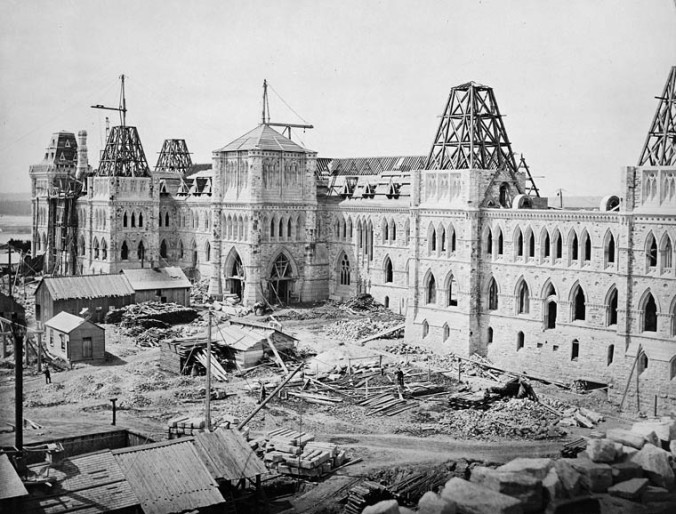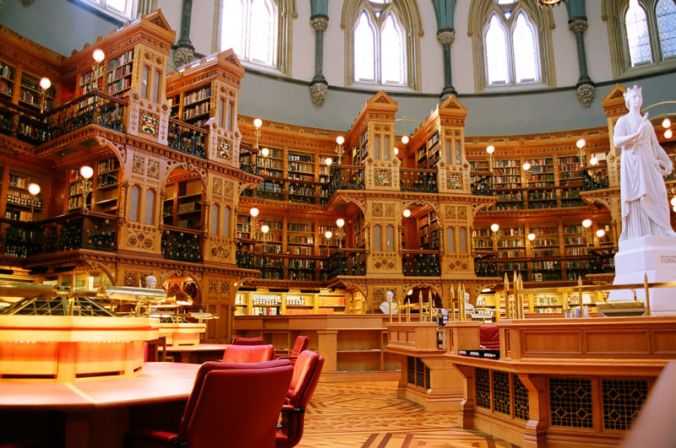For Americans, the politics of the Middle Ages tends to concern one form of government: monarchy. But Canada, composed of the British colonies of North America which did not reject monarchy in the late eighteenth century, seems to have historically held a strikingly different view of how the Middle Ages fall in the narrative of political progress. In the British tradition of constitutional monarchy, after all, the origins of the parliamentary system lie in the Magna Carta of 1215. Over the following centuries, this early-established constitutional monarchy gradually evolved into the recognizably republican system that Canada was subject to by the mid-19th century.

Construction of Parliament Hill’s Centre Block in 1863.
Parliament Hill (the collective name for the Canada’s capitol buildings in Ottawa), built between 1859 and 1876, was designed as the visual antithesis to the United States Capitol building. Rejecting the Capitol’s neoclassical architectural precedent for seats of legislative government, Parliament Hill was constructed in a decidedly Gothic Revival style, following the lead of the UK’s still-under-construction Palace of Westminster. The bold architecture of Parliament Hill gave the medieval parliamentary tradition a seat of administration for North America. The buildings of Parliament Hill are even situated on a dramatic mount that rises high above the Ottawa River, as if a European castle. Among the most prominent structures in this complex is the Library of Parliament, in the form of a fantastical Gothic rotunda. This building presents medievalism as not just compatible with, but consistent with intellectualism. The architecture of Parliament Hill places Canada’s seat of republican government within a vestibule of medievalist sensibility.

The fanciful Gothic interior of the Library of Parliament.
The use of medieval imagery in the buildings of Parliament Hill expresses just how maneuverable referencing the Middle Ages can be in modern political discourse (even visually). In the United States, the medieval is frequently viewed as politically reactionary. In Canada, the medieval can connote a tradition of political reform that finds its origins in 13th century England. In both, the medieval has a history of snaking its way into contemporary political rhetoric.
You must be logged in to post a comment.